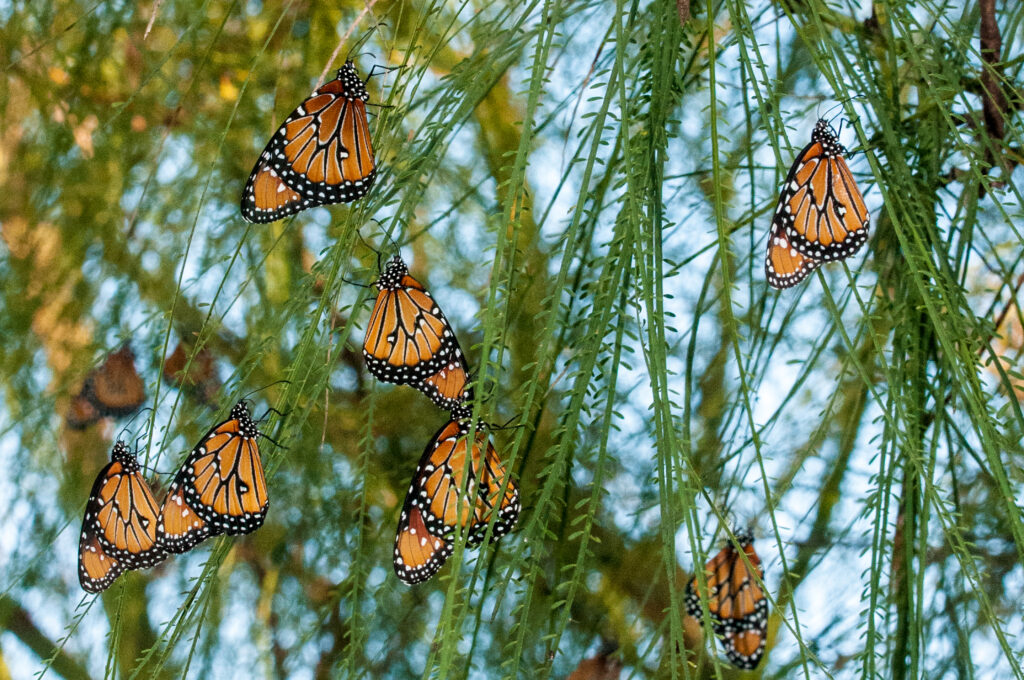
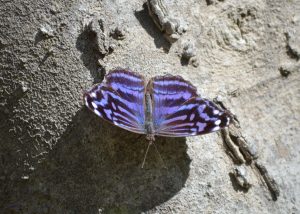
Because it is not possible for us to build anything on our true border (the middle of the Rio Grande River), the border wall is tentatively planned to be constructed up to two miles north of the actual border, forfeiting 80% of the lower RGV’s scarce native habitat to the south side of what is essentially a new border.
The green spaces that will be lost include sanctuaries not only for wildlife, but for American families, too.
Though the RGV is home to many city parks and thousands of acres of privately owned ranches, there is little publicly accessible wilderness left. The border wall will block American access to most of the National Butterfly Center, Santa Ana National Wildlife Refuge, and similar areas, preventing thousands of families from reaching outdoor areas that are vital to their physical and mental health. I know because I have depended on these places for my own wellbeing.
A few years ago, I developed a mysterious autoimmune disease. My body had fought an invading virus so aggressively that it began to misidentify its own healthy cells as enemies, attacking my lungs, skin, and joints. Most days, I used all my energy to work for a few hours and then came home and collapsed on the couch where I focused solely on remaining conscious enough to watch my six-year-old daughter sit in front of the TV or play a video game until her dad returned from his office. Even when my husband arrived and urged me to go to bed, I struggled to drag myself up, slowly shower, and will a heavy toothbrush across my teeth. My care team thought Lupus could be possible. While I waited for more test results, my therapist urged me to minimize stress. She told me to look for birds or butterflies. “Wait at a window for one to appear. Be present. Watch.” She prescribed nature and said that time outdoors would be helpful to my daughter and husband, too.
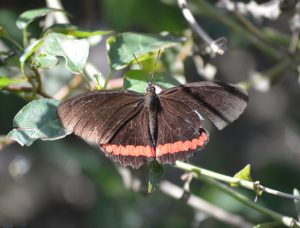
Driving home from school one afternoon, we came across dragonflies and swallows all swarming and swooping through our neighborhood. Initially, it looked like the swallows were eating the dragonflies, but they both chased something else that was invisible to us. An impatient driver honked and forced us to move on before we could discover what was for lunch.
One day, we drove through a bloom of tiny yellow butterflies that sprinkled down from the heavens like living confetti.
Physically, I still suffered from pain and fatigue, but these little observations lifted my spirits. I realized we needed a closer look at nature. Not the nature that you see from your car windows. Not the nature you sample in a city park full of well-groomed trees and grackles that steal popcorn from trashcans. Not even the nature of our small yard where a hummingbird built a nest in our biggest tree. We needed nature we could get lost in.
The National Butterfly Center was the first place we visited on our quest for wellness. The center’s entrance features a rectangular, white brick building and a shimmering reflecting pool. The sharp, straight lines of the building and pool contrast with the center’s acres of curvy, cultivated gardens and zig-zagging, brush-lined trails.
I marveled at how quiet the grounds were. I was used to the endless noise of the city, but at the center, I could hear the breeze rustling through the tall grass and shrubs. It felt like the land sighed. As I grew closer, I saw many orange butterflies stuck to every plant, opening and closing their wings in time. I passed under a shady canopy of trees, and a Mexican Bluewing landed on my shoulder. For a few moments, the butterfly’s wings rose and fell with my own soft breathing. I lost my troubles and found a bit of peace.
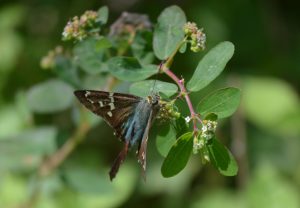
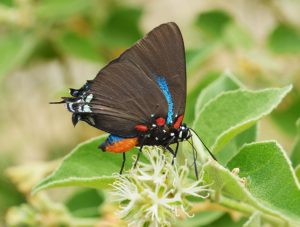
Perhaps the most famous visitors, though, are the center’s namesake swallowtails, hairstreaks, emperors, skippers, longtails and, of course, monarchs. Thousands of monarchs arrive each October from northern states, floating into the subtropical RGV like orange autumn leaves. They bring the cool with them. They stay awhile and then spirit away to Mexico in time for Dia de los Muertos. After wintering in Mexico, they ride warm winds north, returning to the National Butterfly Center before bringing spring and summer to Kansas, Michigan, and beyond. The National Butterfly Center is an ideal location to witness this migration, so it’s hard to believe our government wants to seize seventy of its one hundred beautiful acres to build an ugly wall.
Contrary to common belief, the wall will not be erected in an empty, dusty space. Its engineers will cut through a critical conservation corridor, demolishing thousands of acres of lush, riparian habitat. In a sense, the United States is being diminished by its own autoimmune disease. Some of our leaders have become so aggressive in fighting “bad hombres” that they are also hurting innocents on American soil. The border wall is supposed to protect our country’s border, but if it is built where it has been proposed, we will lose some of our nation’s most beloved and necessary land.
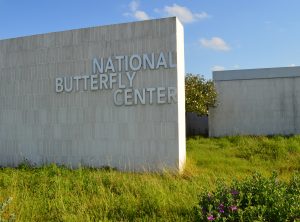
If the wall is built where it’s proposed, people and animals in the RGV will lose places that nourish them. The wall will allow us to keep our grey interstates, but we will lose our brown river. We will be able to visit our newly-remodeled shopping mall, but be unable to sit beneath our 900-year-old Montezuma Cyprus tree. We will keep our multimillion dollar convention center, but lose La Lomita Mission. We will preserve our gated communities, but be left outside the gate of the “crown jewel” of the National Wildlife System, Santa Ana National Wildlife Refuge.
To thrive, we need all the parts that make us whole. We need balance. We need our treasured green spaces to be kept a part of this one nation, indivisible, for all.